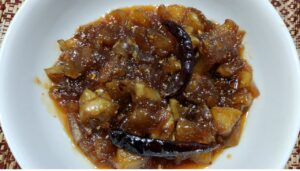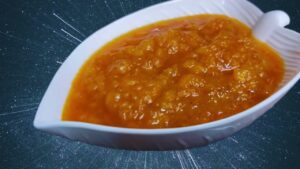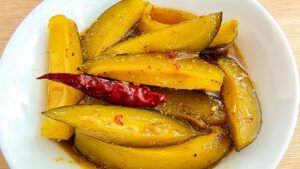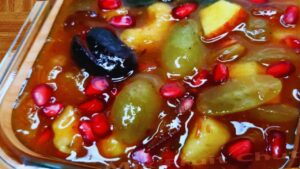Delight your taste buds with the sweet and tangy goodness of homemade pineapple chutney.
This versatile condiment adds a burst of tropical flavor to your meals, making it an ideal accompaniment for various dishes.
Follow my step-by-step guide to create this delectable chutney that balances the sweetness of ripe pineapple with a hint of spice, creating a culinary delight for your palate.

KEY TAKEAWAYS
- Pineapple chutney offers a delightful combination of sweet and tangy tropical flavors, elevating the taste of various dishes.
- Its versatility shines as it pairs seamlessly with grilled meats, Indian dishes like paneer tikka, and even cheese platters.
- The inclusion of raisins adds a chewy texture, creating a well-balanced chutney that enhances both the taste and mouthfeel of dishes.
- Adjust the sugar quantity to balance the chutney’s sweetness, ensuring it complements rather than overpowers the overall dish.
- Explore the creative fusion potential by experimenting with pineapple chutney in diverse culinary creations, from tacos to sandwiches and beyond.
How to Make Pineapple Chutney? (Step by Step Guide with Images)
Cutting the pineapple for the chutney:
Step 1: Take one medium size ripe pineapple. Peel the skin using a knife.
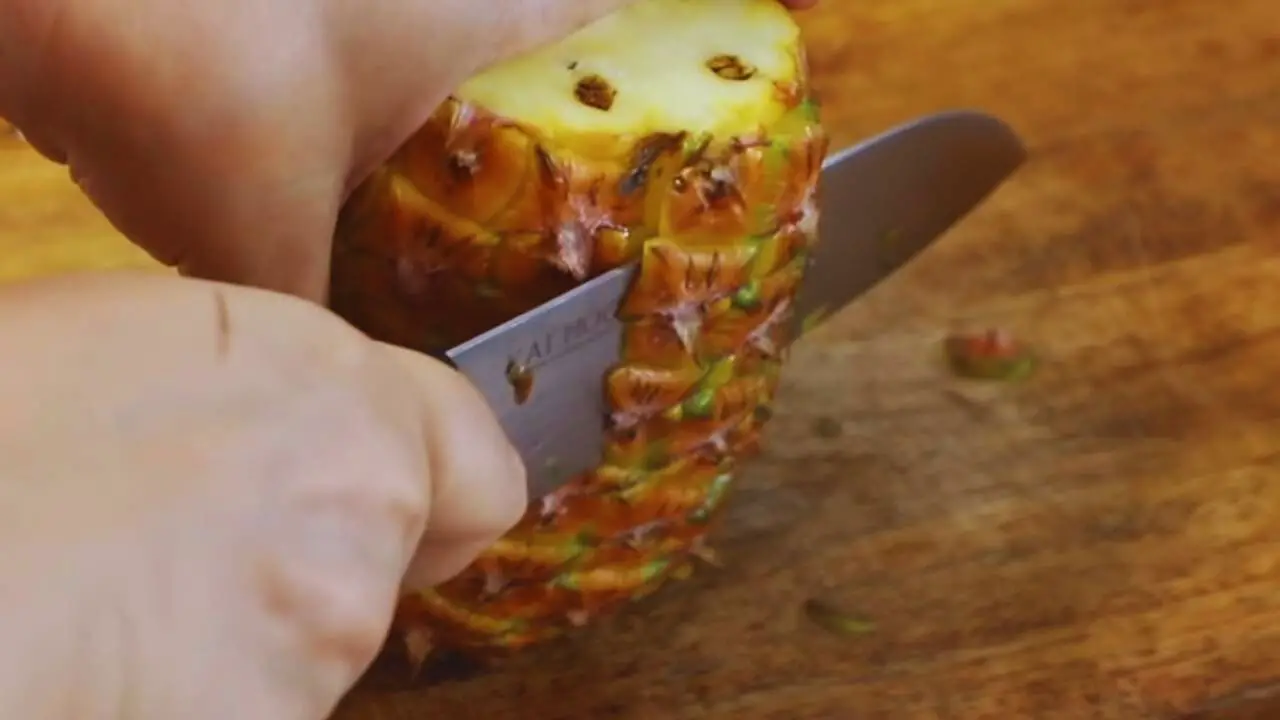
Step 2: Remove the ‘eyes’ (receptacle bracts or axillary buds) diagonally. Wash it nicely.
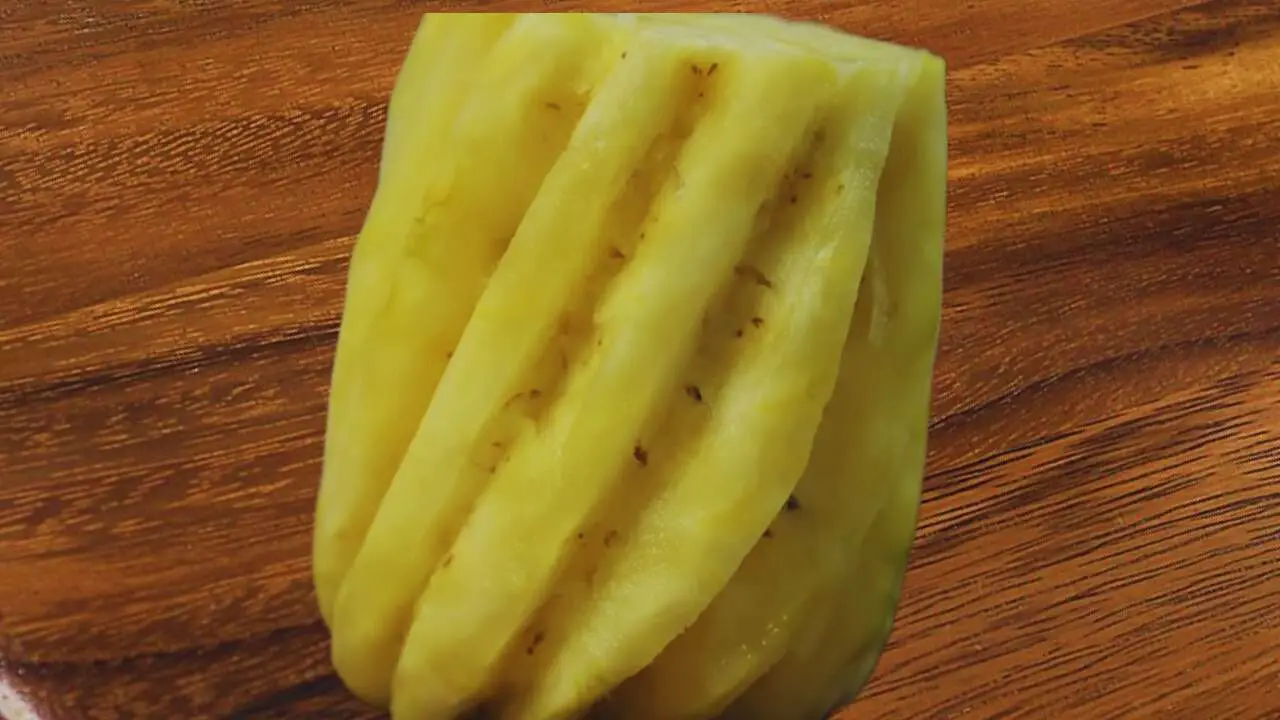
Step 3: Now, cut the pineapple into four pieces.
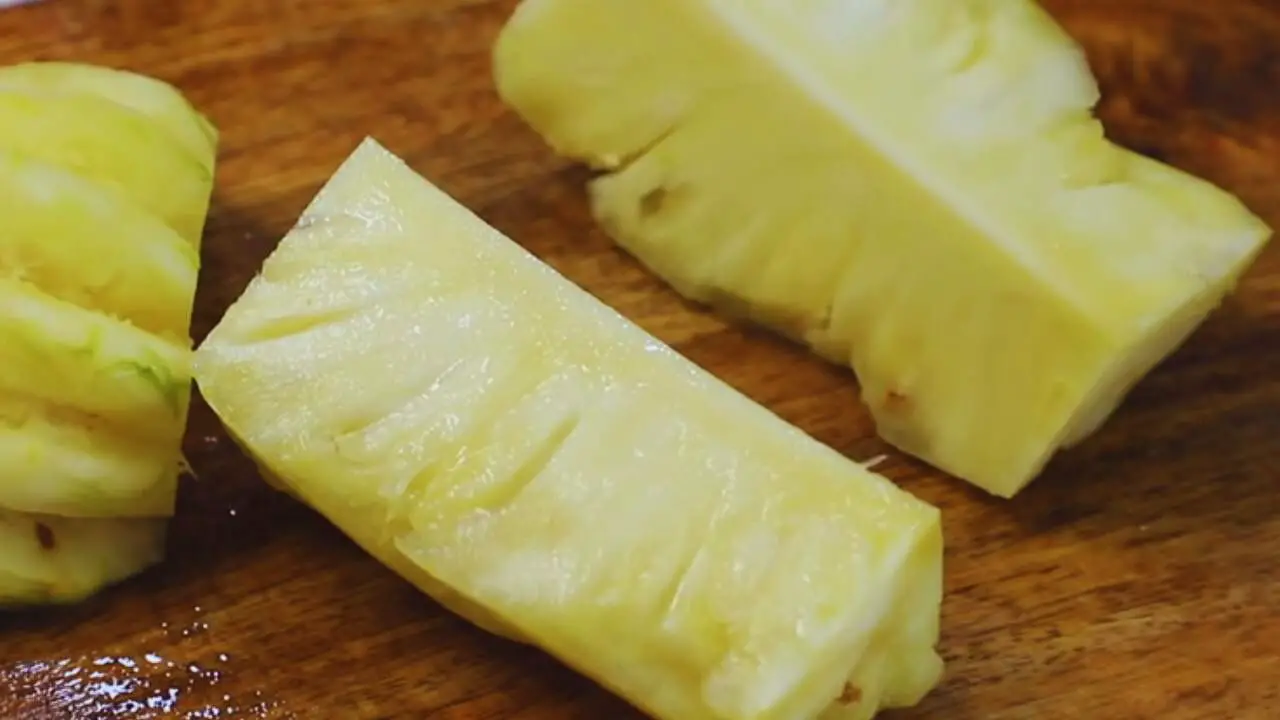
Step 4: Then, cut away the juicy flesh of the pineapple from the hard and less juicy central part or core of each of all of the four pieces.
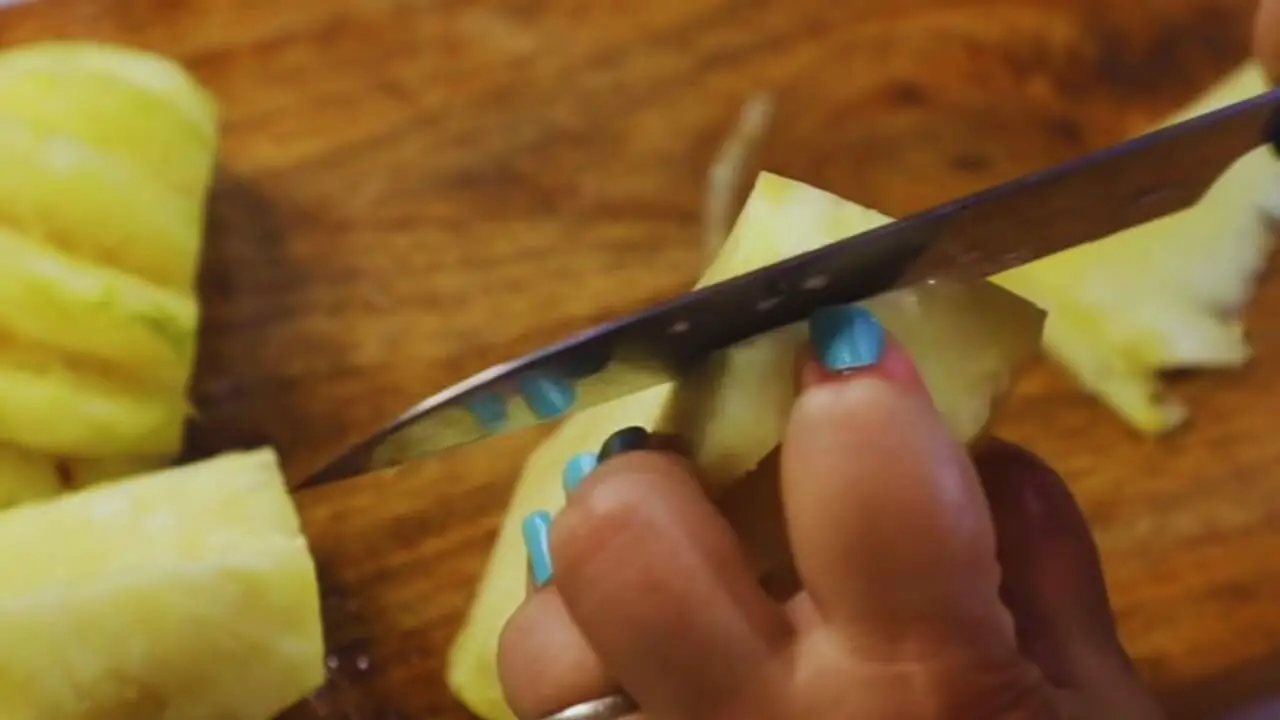
Step 5: Finally, chop the pineapple into smaller and finer pieces.
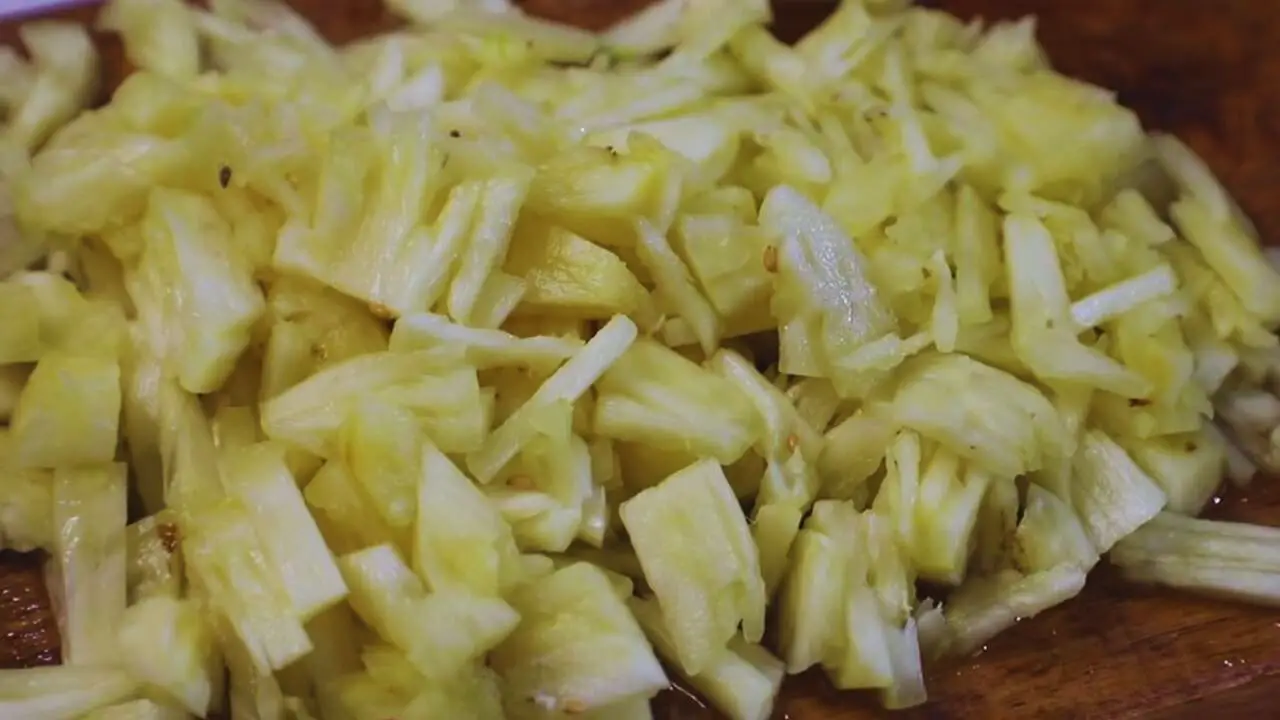
(Expert tip: Cutting the ripe pineapple is very important for proper cooking and the texture of the eventual chutney).
Making the chutney:
Step 6: Take a frying pan or wok, depending on the volume of chopped pineapple pieces, and heat it on a medium flame on your gas stove. Put all of the chopped pineapple in it.
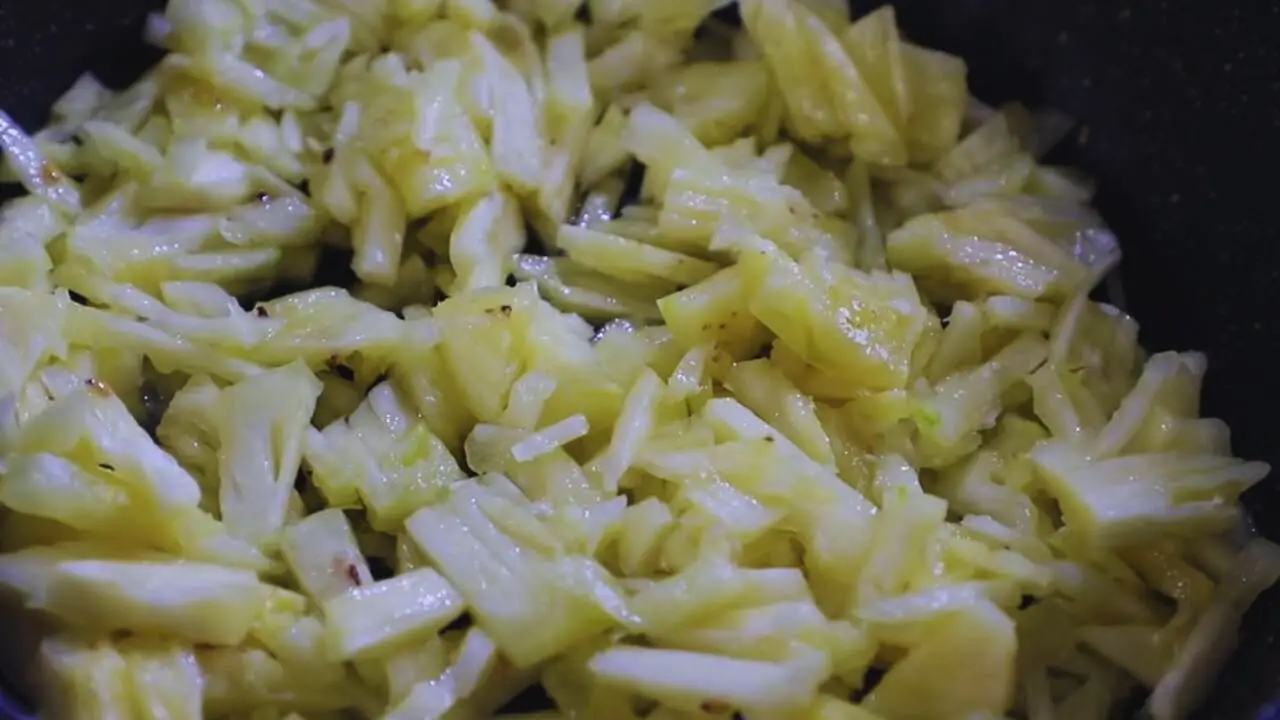
Step 7: Now, add ½ tsp of salt to it.
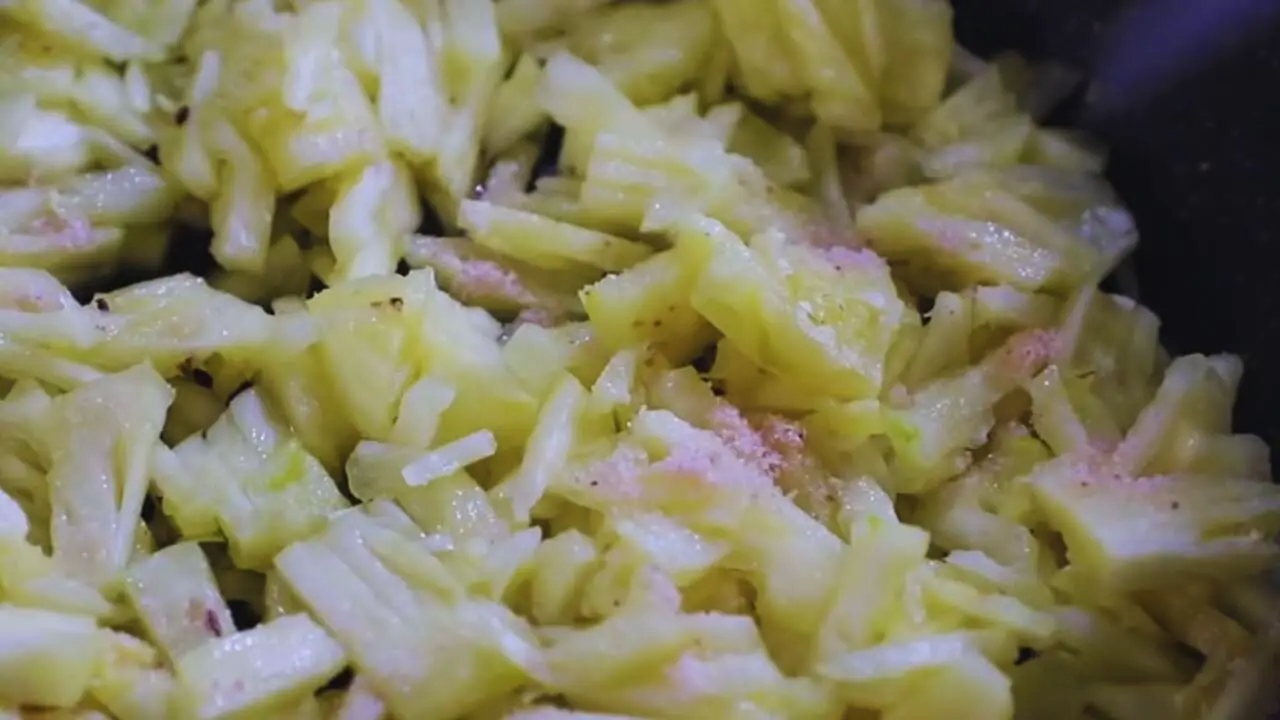
(Expert tip: You can use regular table salt for your chutney. However, for a better taste I have used black salt).
Step 8: Stir the pineapple to mix the salt nicely to it.
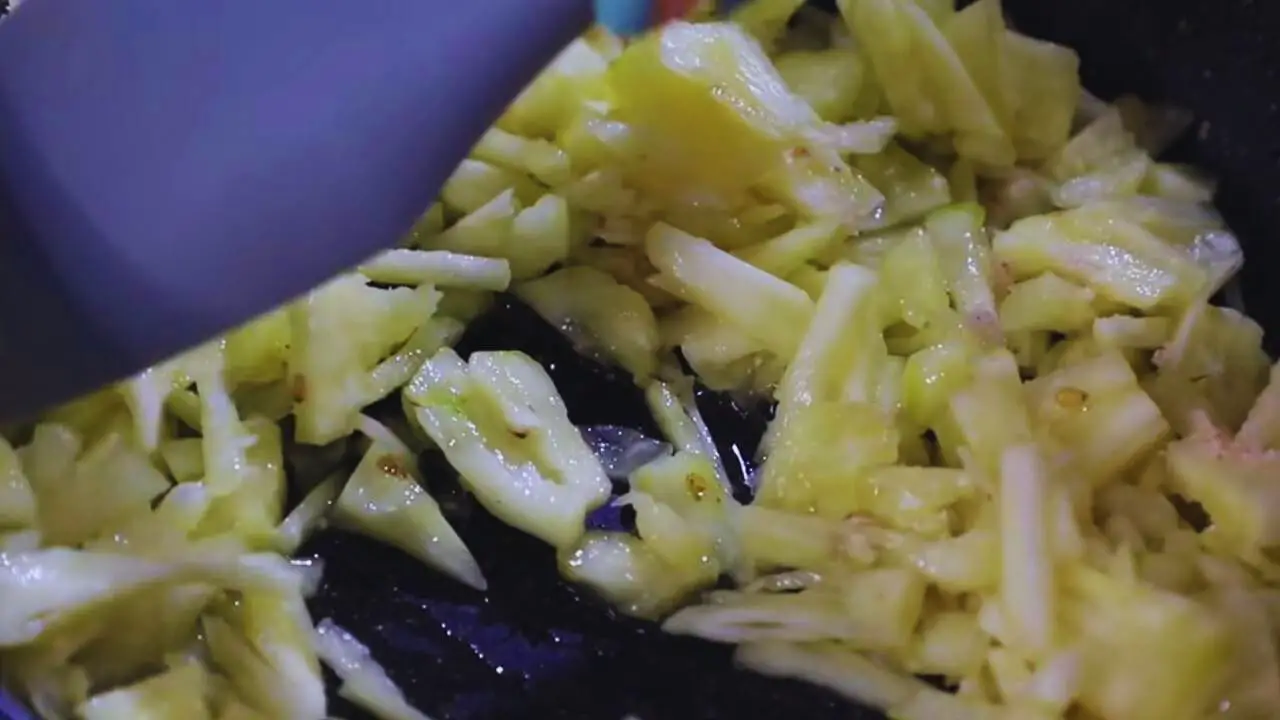
Step 9: Cover the pan and let the pineapple cook for about 5 to 10 minutes until it becomes soft and releases its juice.
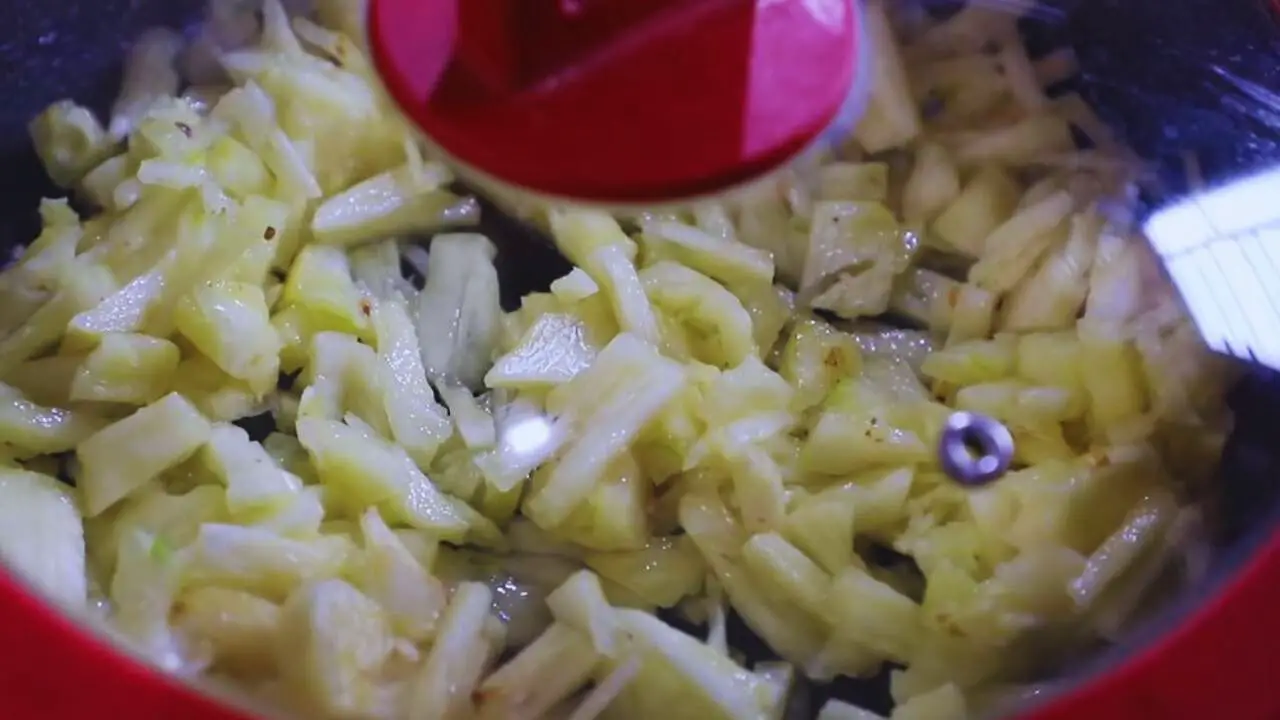
Step 10: While the pineapple is cooking, take another frying pan to prepare the sugar syrup. Add 1 cup of sugar in it.
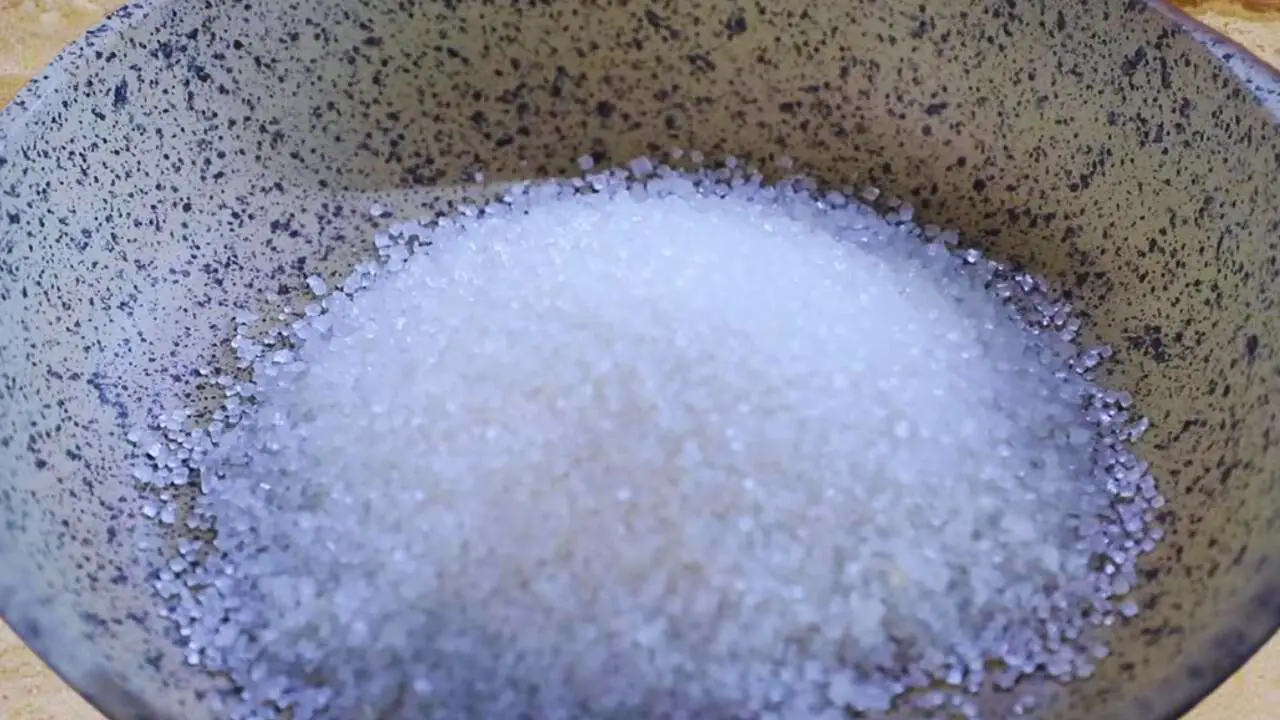
(Expert tip: You may add more sugar depending on the sweetness of the pineapple. Check it beforehand so that your pineapple chutney does not become excessively sweet).
Step 11: Pour ½ cup of water into it.
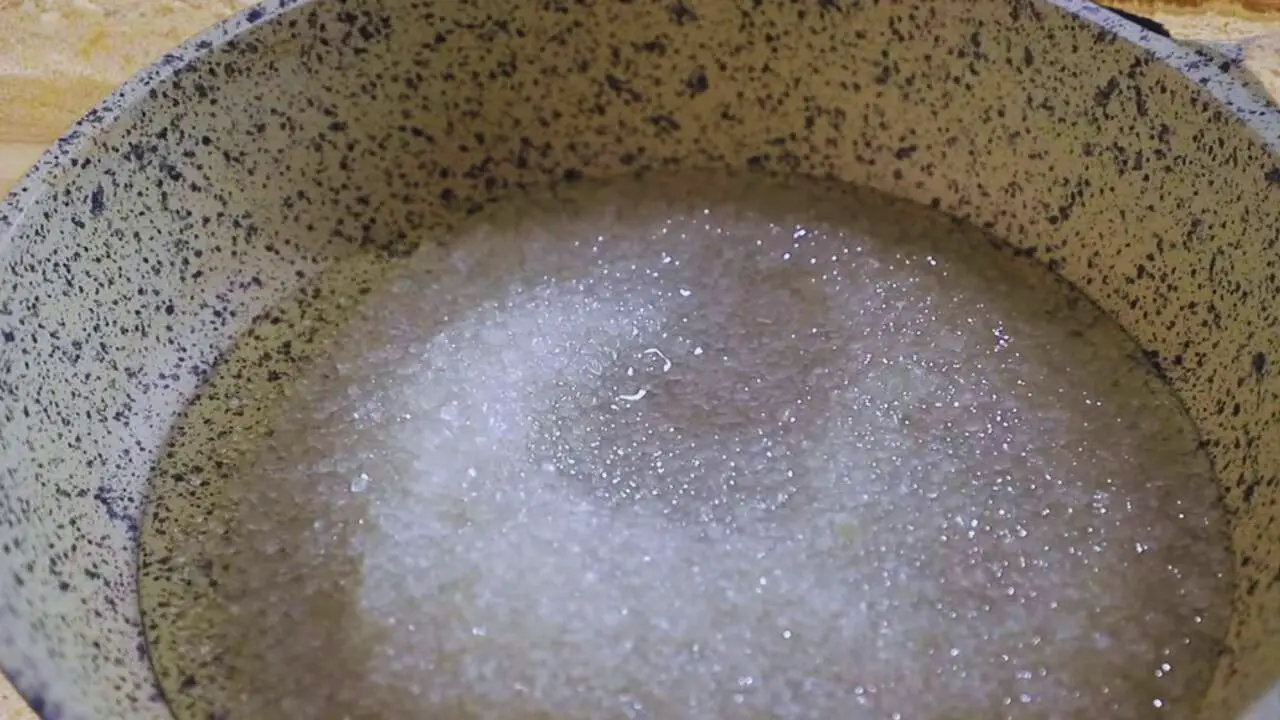
(Expert tip: Do not put too much water. It will prolong the cooking process and also make the chutney watery).
Step 12: Stir it to mix the sugar with the water nicely.
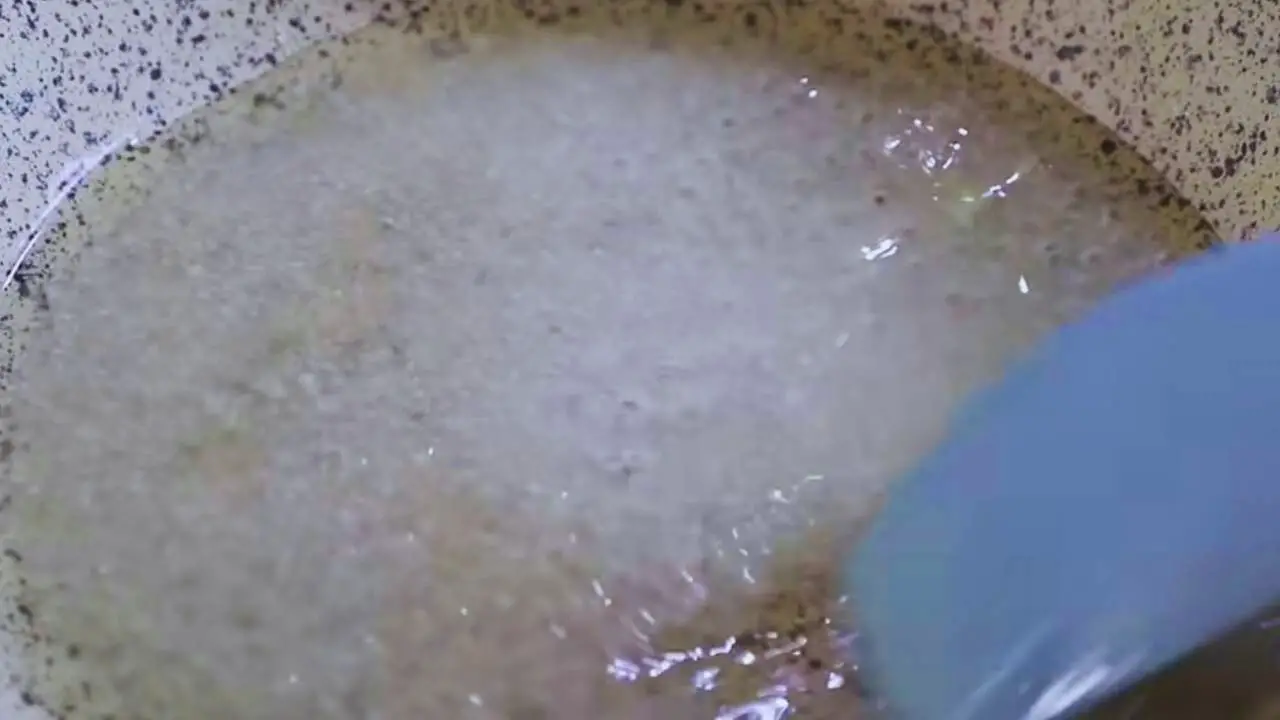
Step 13: Now, remove the cover to check the pineapple cooking in the other pan. Notice the water in it due to the salt. Stir it continuously and let it cook for another 2 to 3 minutes uncovered so that the water evaporates.
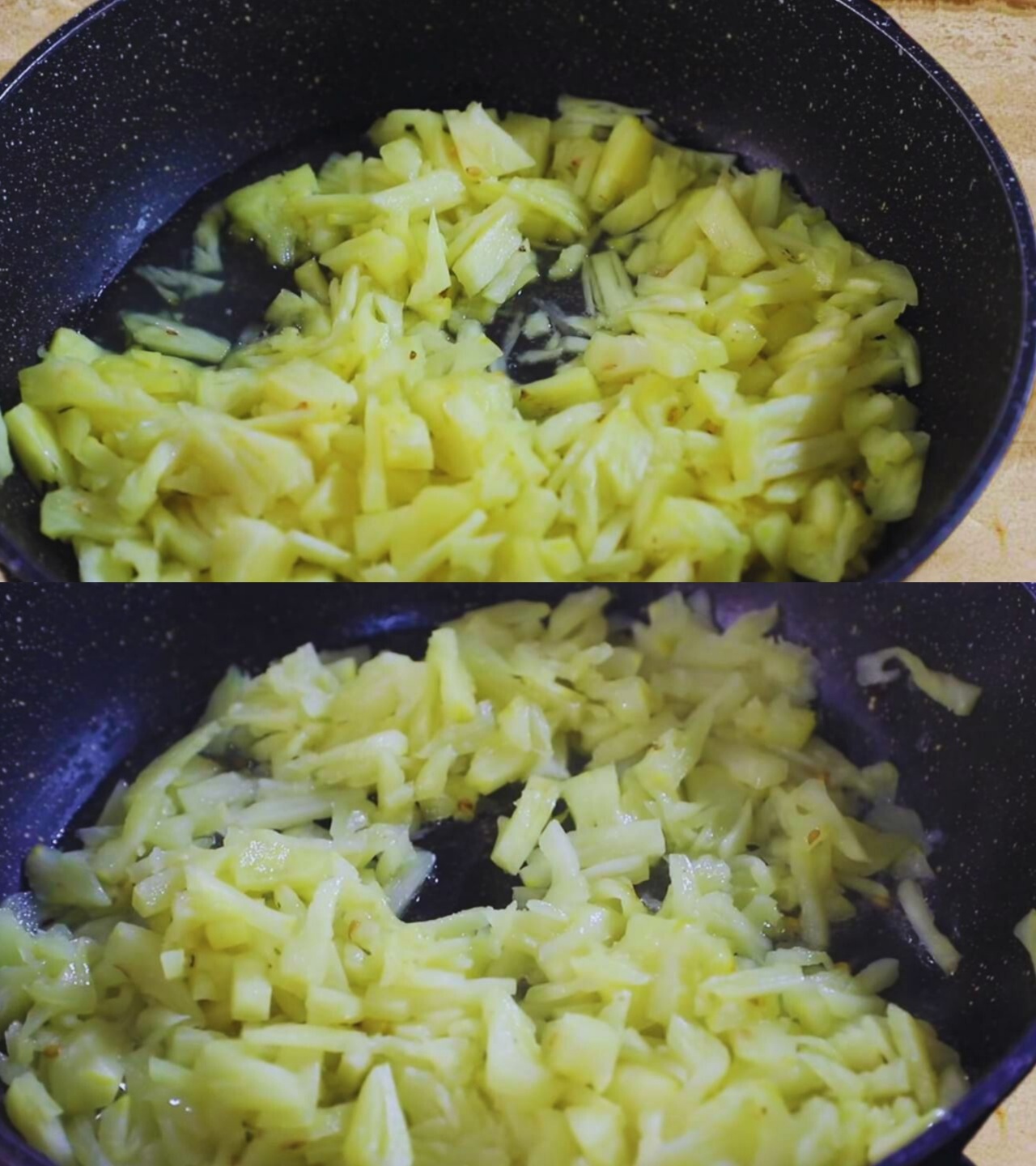
(Expert tip: Turn the flame of your gas stove to high so that the water evaporates quickly and the sugar syrup does not become excessively thick during that time. You may turn the flame to prevent the sugar syrup from becoming thicker if needed).
Step 14: When the water has evaporated and the pineapple pieces have become soft and tender, transfer the cooked pineapple from the pan to the one with the sugar syrup.
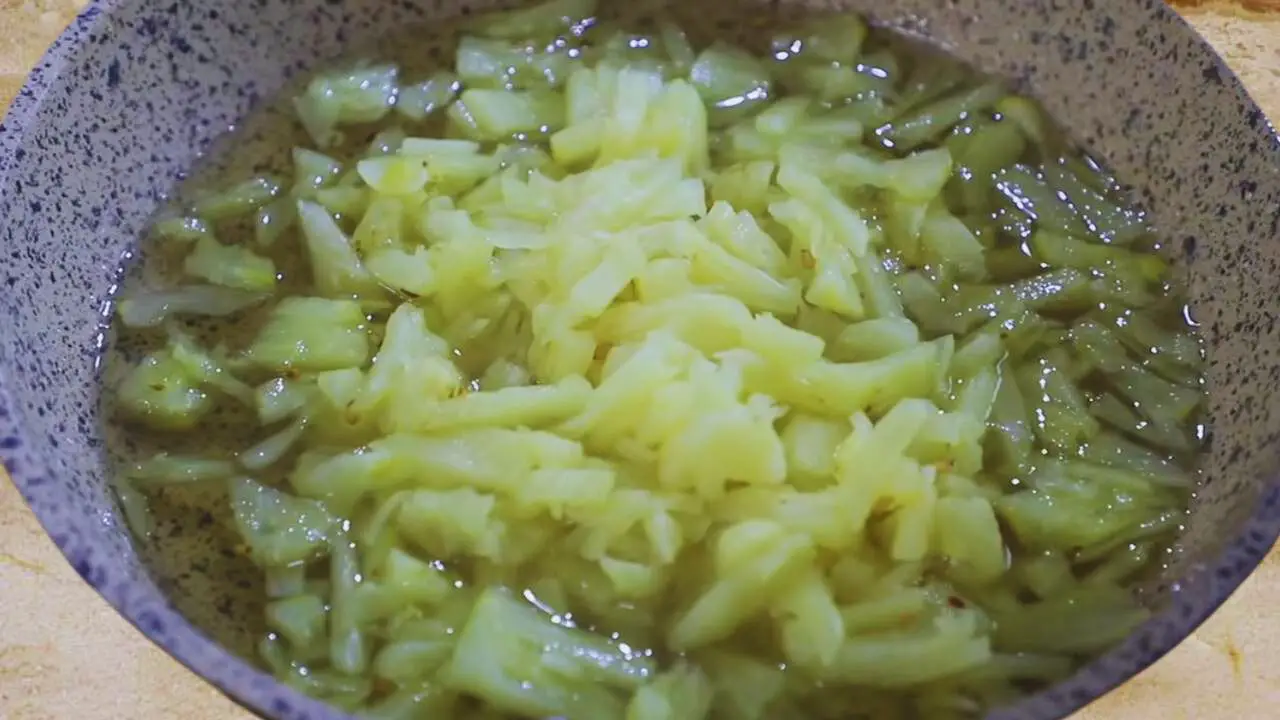
Step 15: Stir it nicely to mix the sugar syrup with every piece of the pineapple. Let it cook for another 10 to 15 minutes on a medium flame.
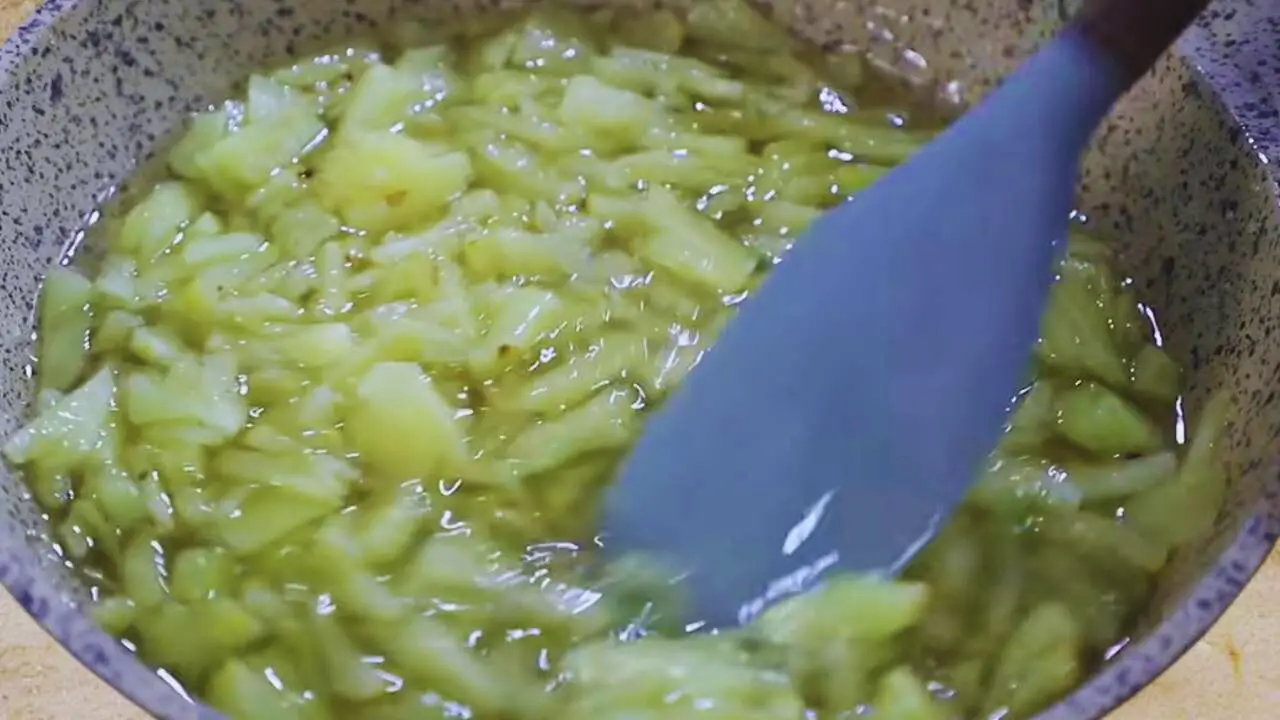
Step 16: Now, add about 2 tbsp of raisins to the content in the pan.
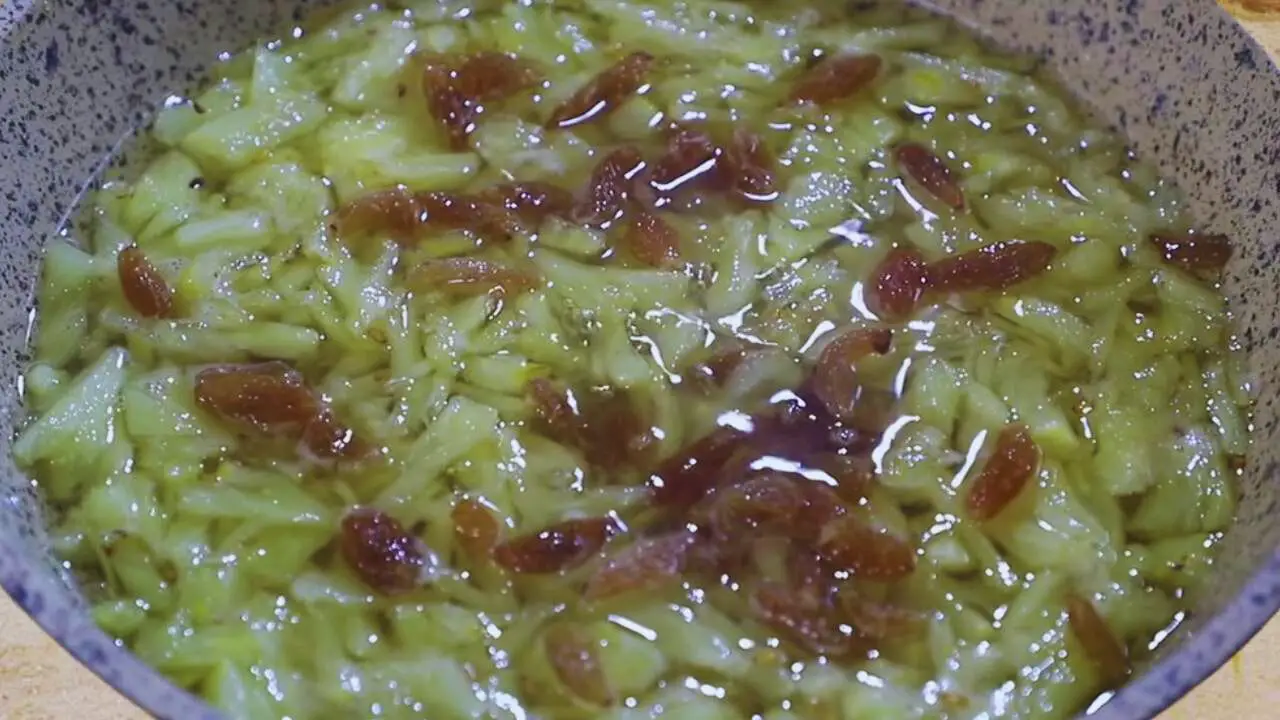
Step 17: Stir and let it cook for another 8 to 10 minutes or so on a medium flame until the sugar syrup becomes thicker, the raisins are cooked nicely, and the chutney gains a nice color and consistency.
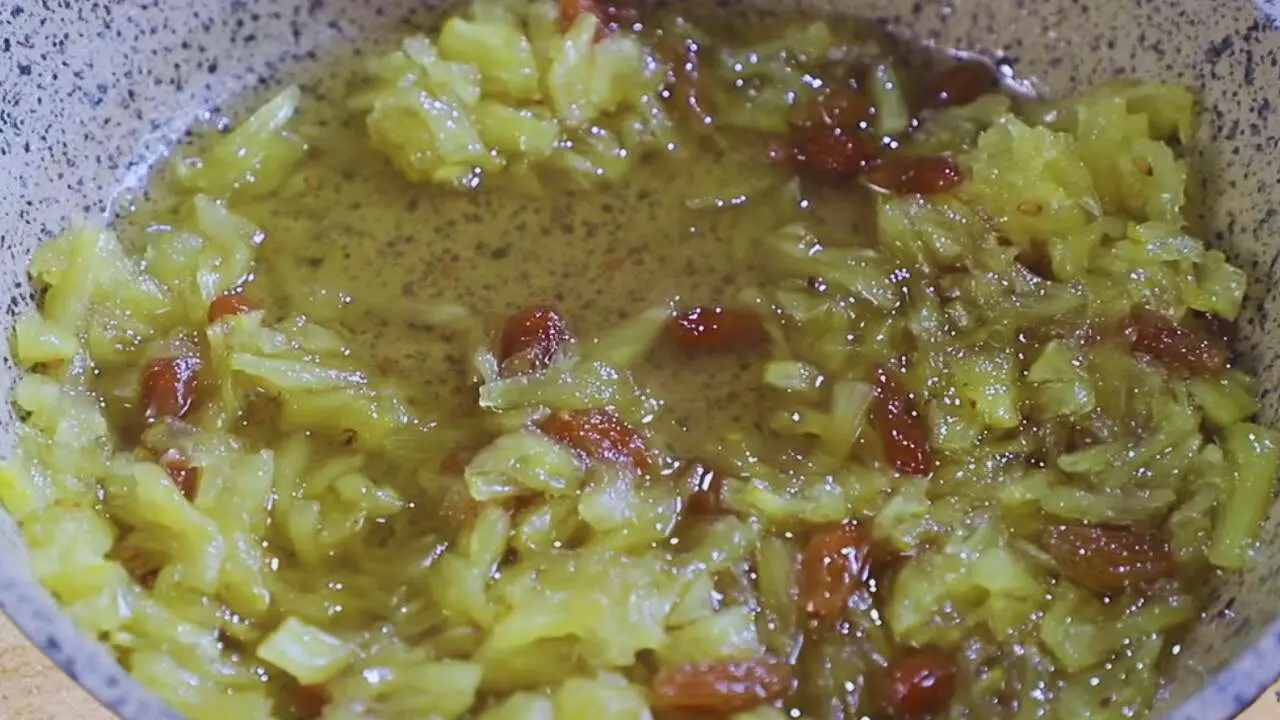
Step 18: Though there is no need to add any additional masala to the chutney, you may add about ¼ tsp of the skin or pericarp of a dry red chili as I have at this point.
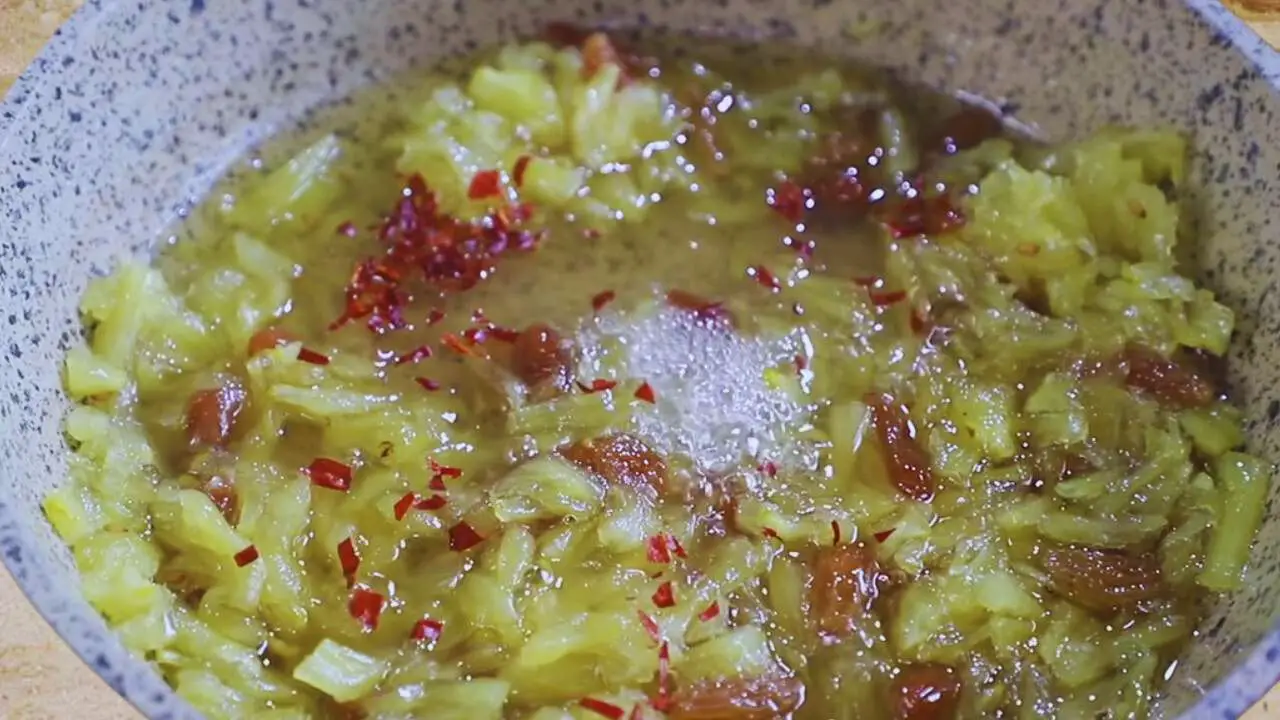
(Expert tip: Make sure that you remove the seeds of the dry red chili and make a coarse powder of it before adding it to the chutney. You may also cut it into small pieces using a pair of scissors).
Step 19: Stir and mix everything nicely, let it cook for another minute or so until the chutney becomes thicker.
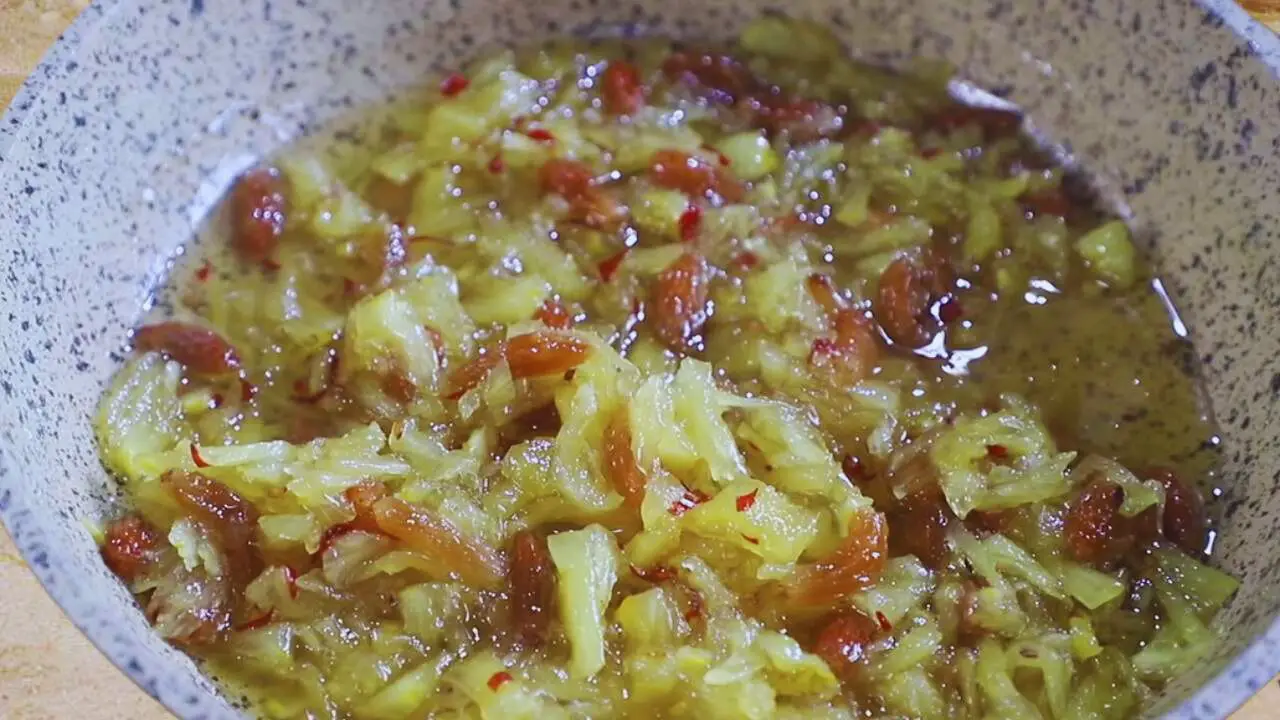
Step 20: Now, turn the flame of the gas stove off, and finally, add 1 tsp of fresh lime juice to the chutney.
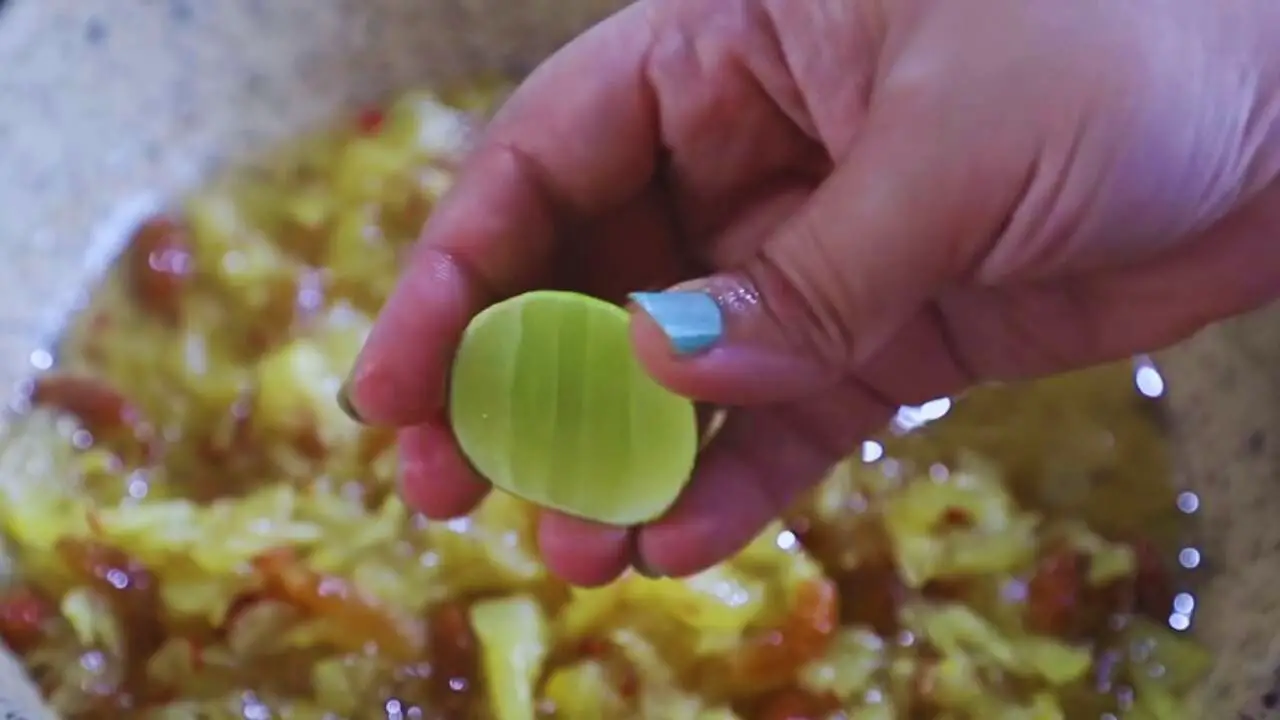
Step 21: Give it a final stir, transfer it into a bowl and your delicious homemade pineapple chutney will be ready to be consumed once it is cool.
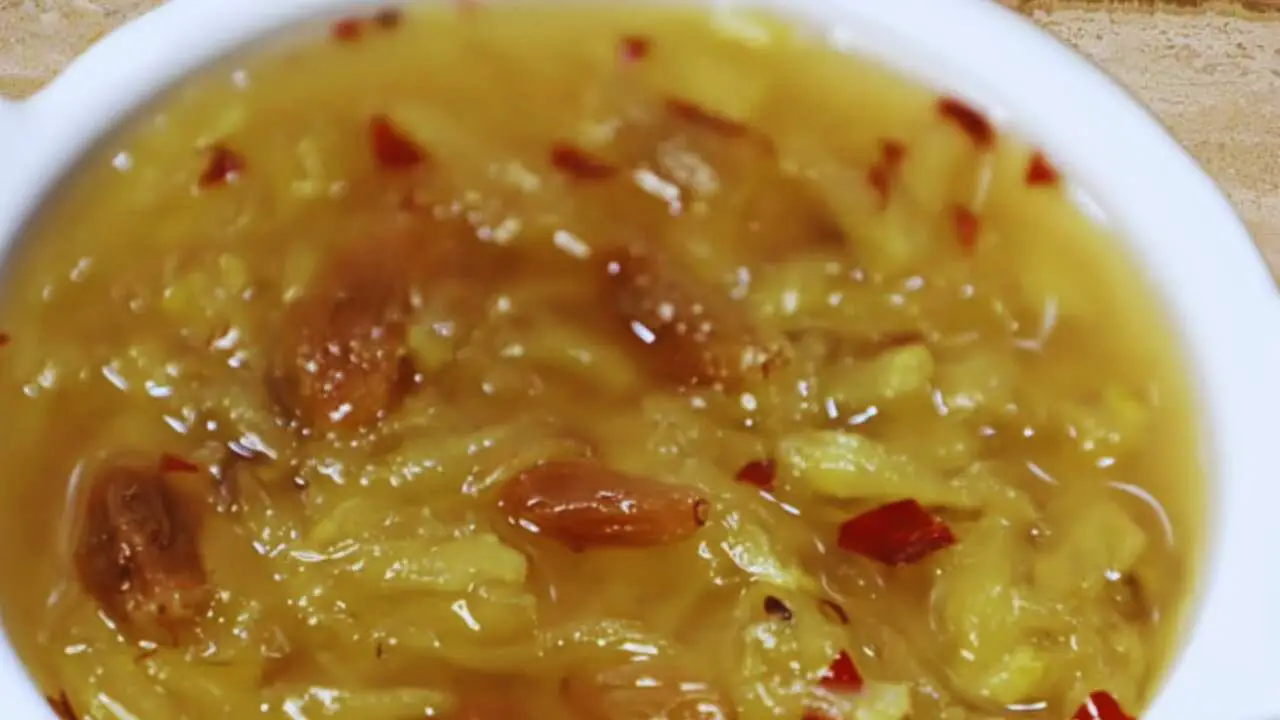
Pro Tips for Making Pineapple Chutney
Choose Ripe Pineapple: Opt for a ripe pineapple to ensure natural sweetness and flavor in your chutney.
Proper Pineapple Cutting: Pay attention to cutting the pineapple properly; it significantly impacts the chutney’s texture.
Balancing Sweetness: Adjust sugar quantity based on the pineapple’s natural sweetness to avoid excessive sweetness in the chutney.
Experiment with Salt: Try different types of salt for unique flavor profiles; black salt can add an extra dimension.
Mind the Water Content: Be cautious with water quantities; too much can make the chutney watery, affecting its consistency.
Control Sugar Syrup Thickness: Keep an eye on the sugar syrup consistency; it influences the overall texture of the chutney.
Raisins for Texture: Adding raisins enhances texture and adds a delightful chewiness to the chutney.
Spice Level Adjustments: Customize the spice level by experimenting with the optional dry red chili skin; adjust to your taste.
Quick Evaporation Technique: Increase the flame when evaporating water to avoid thickening the sugar syrup excessively.
Lemon Juice Finale: The final touch of fresh lime juice brightens the flavors; add it at the right moment for optimal impact.
Avoid Overcooking Raisins: Be mindful not to overcook the raisins; they should be plump and tender, not mushy.
Perfect Consistency: Achieve the desired thickness by carefully monitoring the cooking time in the later stages; consistency is key.
Pineapple Chutney Storing Tips
Airtight Containers: Store pineapple chutney in airtight containers to preserve its flavor and prevent external odors.
Refrigeration: Keep the chutney refrigerated to maintain its freshness and extend its shelf life.
Avoid Moisture: Store the chutney away from moisture to prevent changes in texture and consistency.
Clean Storage: Ensure the storage container is clean and dry before placing the chutney to avoid contamination.
Consistent Temperature: Maintain a consistent temperature in the storage area to preserve the quality of the chutney.
How Does Pineapple Chutney Taste?
Pineapple chutney delights the taste buds with a harmonious blend of sweet and tangy notes. The natural sweetness of ripe pineapple is complemented by a subtle spiciness, creating a well-balanced flavor profile.
The addition of raisins contributes a chewy texture, while the touch of fresh lime juice adds a refreshing citrus zing. The result is a deliciously versatile chutney that enhances a variety of dishes with its tropical and satisfying taste.
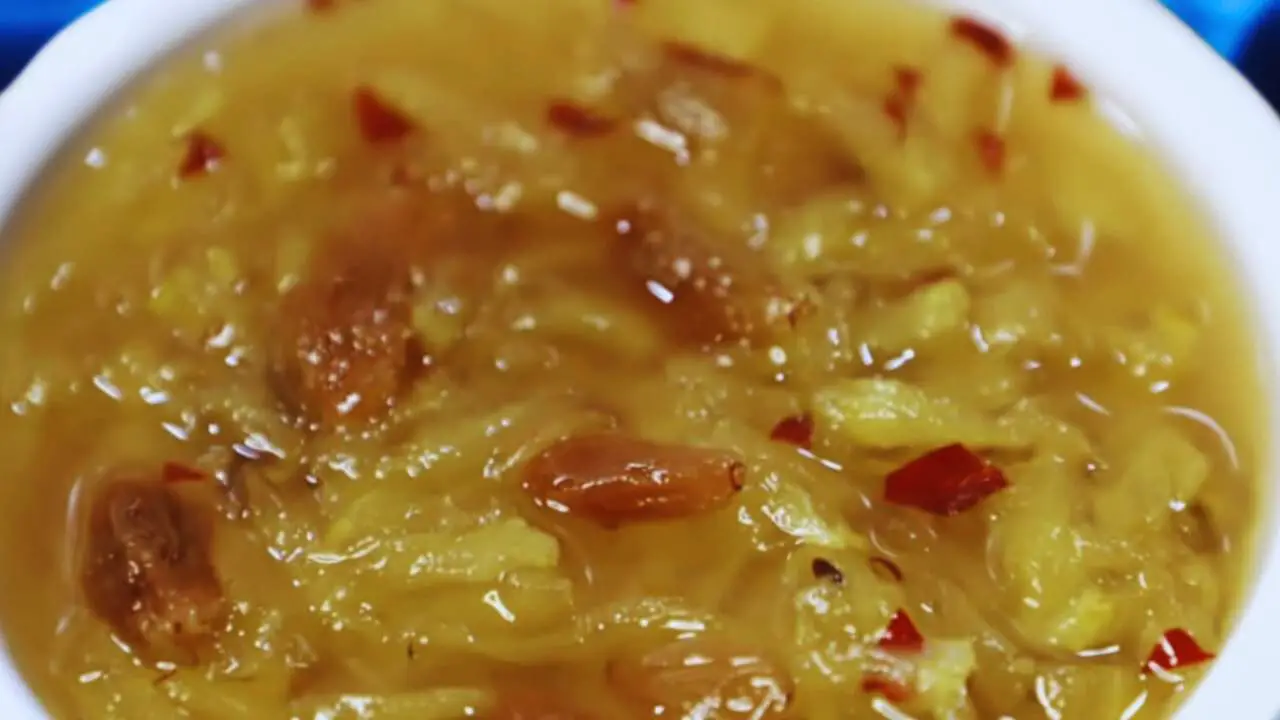
Pineapple Chutney Variations
- Mango pineapple chutney
- Pineapple date chutney
- Pineapple mint chutney
- Pineapple coconut chutney
What Dishes Can Pineapple Chutney Be Served with?
Grilled Meats: Pineapple chutney adds a sweet and tangy kick to grilled meats, creating a flavorful and juicy combination.
Cheese Platters: Serve pineapple chutney alongside cheese platters for a sweet and savory contrast, enhancing the overall tasting experience.
Veggie Spring Rolls: Dip veggie spring rolls into pineapple chutney for a delicious twist, combining the crunch of vegetables with fruity goodness.
Chicken Sandwiches: Spread pineapple chutney on chicken sandwiches to elevate the taste with its sweet and tangy profile, creating a mouthwatering combination.
Rice Dishes: Enjoy pineapple chutney as a side with pulao or other rice dishes, where its sweetness adds a delightful contrast to the savory rice dishes.
Recipe Card
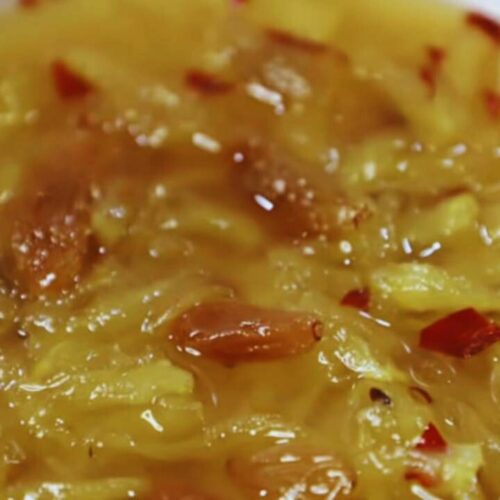
Pineapple Chutney
Ingredients
- 1 pice Ripe pineapple medium size
- 1 cup Sugar
- 2 tbsp Raisins
- ¼ tsp Dry red chili skin (pericarp) (optional)
- 1 tsp Fresh lemon juice
- ½ tsp Salt
- ½ cup Water
Instructions
Cutting the Pineapple:
- Take a medium-sized ripe pineapple and peel the skin with a knife.
- Remove the 'eyes' diagonally and wash the pineapple.
- Cut the pineapple into four pieces.
- Cut away the juicy flesh from the central, less juicy core of each piece.
- Chop the pineapple into smaller, finer pieces.
Making the Chutney
- Heat a pan on medium flame, add chopped pineapple.
- Add ½ tsp of salt and stir.
- Cover and let it cook for 5-10 minutes until soft and juicy.
- In another pan, prepare sugar syrup with 1 cup sugar and ½ cup water.
- Stir to mix sugar with water.
- Uncover the pineapple pan, stir, and let it cook for 2-3 minutes to evaporate water.
- Ensure high flame for quick evaporation to avoid thickening sugar syrup.
- Transfer cooked pineapple to sugar syrup pan.
- Stir well, cook for 10-15 minutes on medium flame.
- Add 2 tbsp of raisins and cook for another 8-10 minutes.
- Optionally, add ¼ tsp of dry red chili skin for spice.
- Stir and cook until the syrup thickens.
- Turn off the flame, add 1 tsp fresh lime juice.
- Give it a final stir and transfer to a bowl.
- Let it cool before enjoying your delicious homemade pineapple chutney.
Notes
Nutrition Info (Estimation Only)
Conclusion
In conclusion, pineapple chutney stands as a testament to the magic of combining simple ingredients to create a symphony of flavors.
Its sweet and tangy allure, paired with a chewy texture, transforms ordinary meals into extraordinary culinary experiences.
Elevate your dining adventures with this homemade delight, turning each bite into a journey through the tropics.

